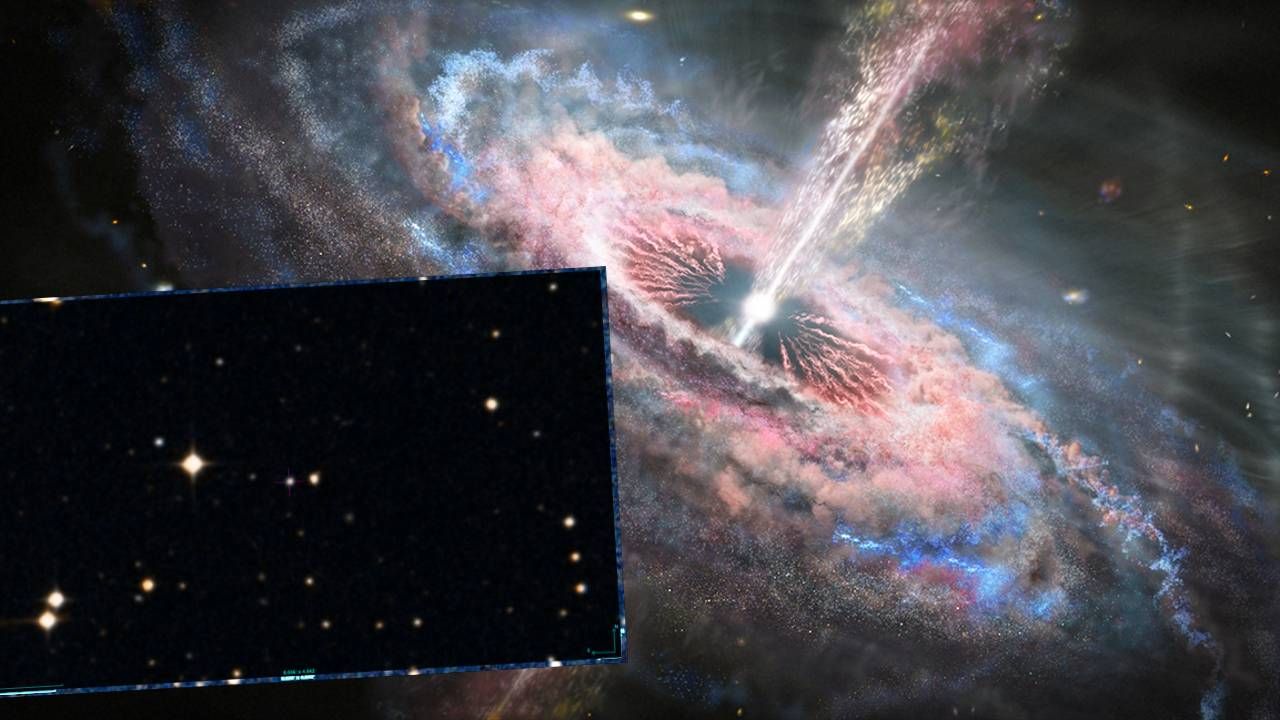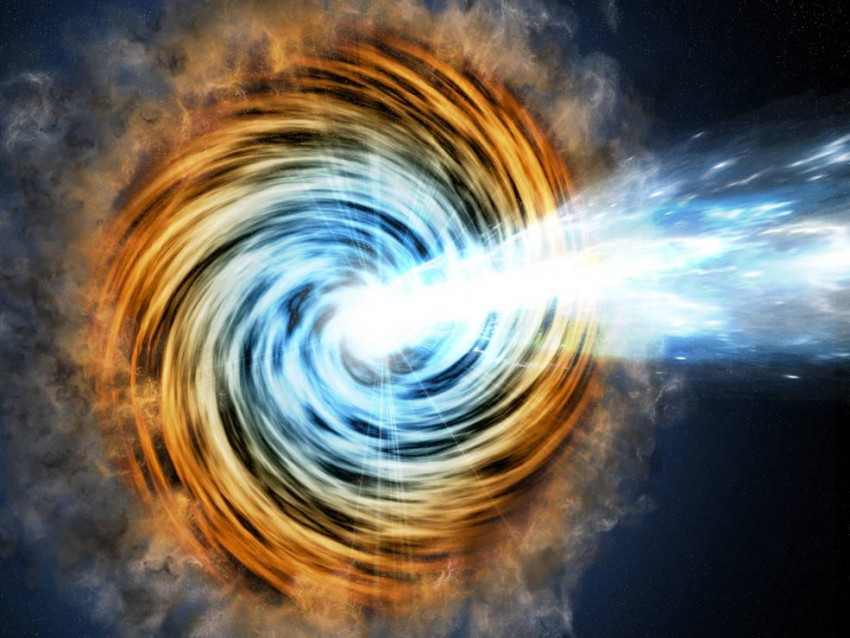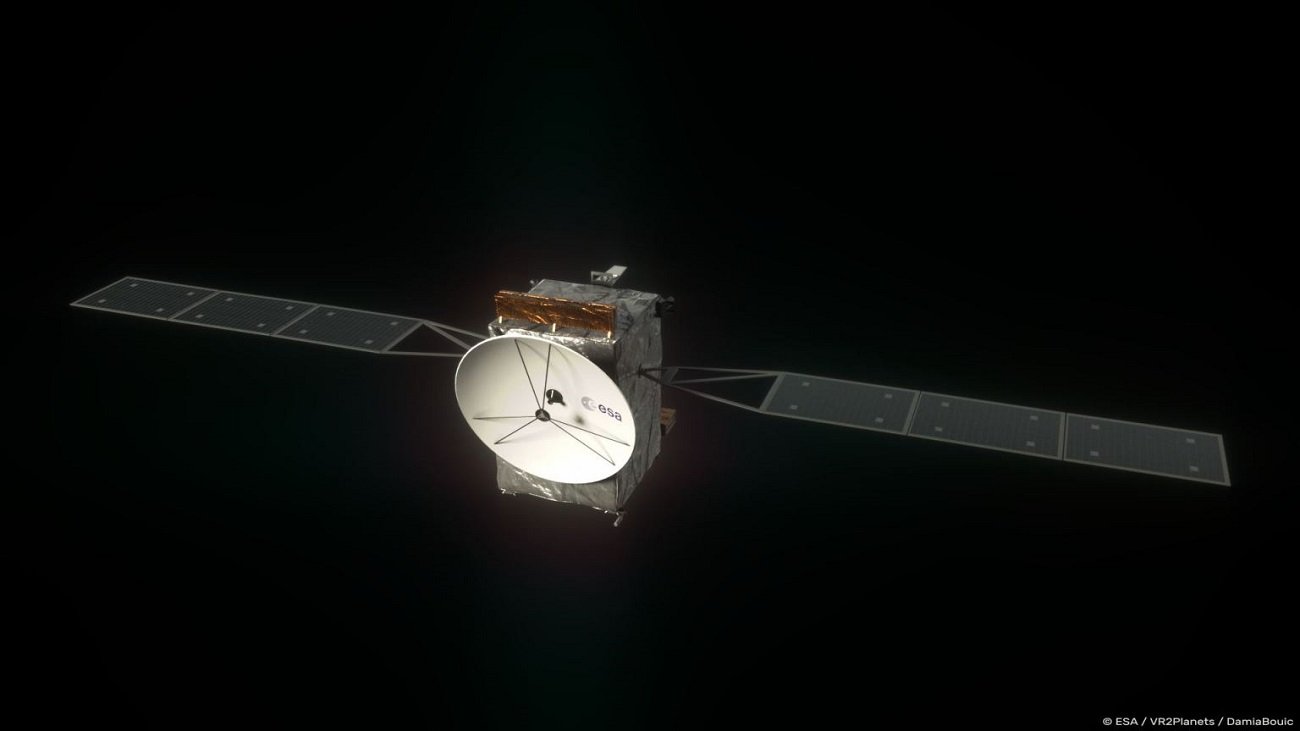Determining the distance to space objects allows you to estimate how much energy they produce and the processes responsible for their illumination. Particularly interesting, compared to the population, is that the organism appears to be an extreme case. Kwazar HE 0435-5304 is unique in many ways due to its high brightness and above-average activity, reports the National Center for Nuclear Research.

The dance of cosmic black holes. “unique object” [WIDEO]
9 billion light-years from Earth, a pair of supermassive black holes have been discovered at the center of a distant active galaxy. Things spin around every two…
see more
Scientists from NCBJ and the Astronomical Observatory of Jagiellonian University have taken an interesting thing – HE 0435-5304. It is a quasar, an active galaxy that is a compressed source of continuous electromagnetic radiation of enormous power, apparently like a star, visible in the southern sky near the south pole of the ecliptic.
This area due to the large distance from the plane Milky Way And the tiny amount of pollution it belongs to, is considered one of the best “windows” to the distant universe outside our galaxy. So, based on observations of the Japanese satellite AKARI, a survey called Deep South AKARI was created there, in which a number of candidate galaxies were identified for the bright and ultra-luminous infrared galaxies (ULIRG).
Kwazar HE 0435-5304 from the beginning caused many problems during its analysis. According to previous spectroscopic measurements, the results of which are in publicly available catalogs and scientific papers, it was supposed to be 8.7 billion light-years away from us. Meanwhile, the Polish team’s first estimates indicated that a shorter distance was more likely – about 3.5 billion light-years. However, these estimates were based on photometric measurements, which by definition are less accurate than spectroscopic measurements.
To measure the physical properties of the quasar and the parent galaxy, it is necessary to know its distance. Assuming a distance of 8.7 billion light-years, HE 0435-5304 appears to have been something very unusual, with stars forming very quickly, even in the class of galaxies undergoing eruptions of star formation. Standard results obtained from physical analysis indicated the strange and brutal nature of this quasar, resulting in the formation of huge numbers of new stars.
Meanwhile, another research team based on the ultraviolet spectrum estimated the distance to HE 0435-5304 at 4.3 billion light-years, well below the catalog value. Researchers from NCBJ and OA from Jagiellonian University have finally decided to solve the HE 0435-5304 quasar distance problem. They made observations with the South African Large Telescope SALT, of which Poland owns 10 percent. Financial involvement, and thus monitoring time. Based on their own observations, they measured the optical spectrum of the quasar. They also used data from the ESO VLT telescope in their research.
A radio map of the universe has been published. Polish researchers are among the authors
Scientists have published a new space map based on observations with the LOFAR Radio Telescope. The map includes more than 4.4 million objects, including…
see more
giant black hole
The quasar HE 0435-5304 turned out to be 4.5 billion light-years away from us – almost twice as close as it appeared in previous measurements, published 20 years ago. Further analysis showed that there is a supermass at the center of the object Black hole With a mass of 117 million times the mass of the Sun, its parent galaxy is undergoing powerful (though not as intense) star formation processes as it once seemed.
This galaxy is dusty, but the dust obscures the stars and does not cover the core of the quasar. HE 0435-5304 is likely in the process of merging with another galaxy, which could start forming a new star and spur quasar activity. The quasar itself belongs to the rare type A extreme.
– Analysis of the high-quality spectra shows that HE 0435-5304 is an extreme object of population A. Community A consists of those active galactic nuclei in which massive black holes consume matter faster than the rest of the population.. These are the bright objects that have been successfully used in the study of the distant universe. Its spectrum is characterized by narrow emission lines, in particular the most extreme group in this classification is the NLSy1 cluster (Narrow Line Seyfert 1 galaxies – Seyfert type 1 with narrow emission lines) – which has the narrowest lines. The activity of active galaxies is also determined by the iron emission spectrum – particularly in the optical range – says Dr. Krzysztof Hrinewicz of the NCBJ Department of Astrophysics.
– Based on the very strong emission of iron ions, we classified HE 0435-5304 into the xA group, that is, objects with high activity in the galactic core, and at the same time close to NLSy1 objects. It is interesting that the intensity of these processes and the location of the quasar itself relative to the entire population changes markedly over time. Unfortunately, the accuracy with which we were able to measure this effect is limited by that of the Earth’s atmosphere. We believe that the aforementioned contrast is related to the gradual decrease in the brightness of the object. In addition, the hydrogen emission streaks have more complex shapes than in other active galactic cores with a similar activity level in Group A, he adds.
– This is an exciting result given that HE 0435-5304 is very bright in the infrared wavelengths (ULIRG), and may be in the process of rapid mass growth in the process of merging two galaxies – confirms Małgorzata Bankowicz, a doctoral student at the Jagiellonian University Astronomical Observatory who studies the properties of ULIRGs. – It is therefore very likely that the very rapid changes occurring in them (compared to the age of active galaxies) are due to an exceptional stage in the evolution of the entire galaxy. Despite the clues our analysis provides, the question remains open whether there was a double black hole in the core of HE 0435-5304 – even before the merger into the merging galaxies – admits.
source:
NCBJ
#cosmos
# quazar
#ncbj
# Jagiellonian University
# Black hole

Echo Richards embodies a personality that is a delightful contradiction: a humble musicaholic who never brags about her expansive knowledge of both classic and contemporary tunes. Infuriatingly modest, one would never know from a mere conversation how deeply entrenched she is in the world of music. This passion seamlessly translates into her problem-solving skills, with Echo often drawing inspiration from melodies and rhythms. A voracious reader, she dives deep into literature, using stories to influence her own hardcore writing. Her spirited advocacy for alcohol isn’t about mere indulgence, but about celebrating life’s poignant moments.














